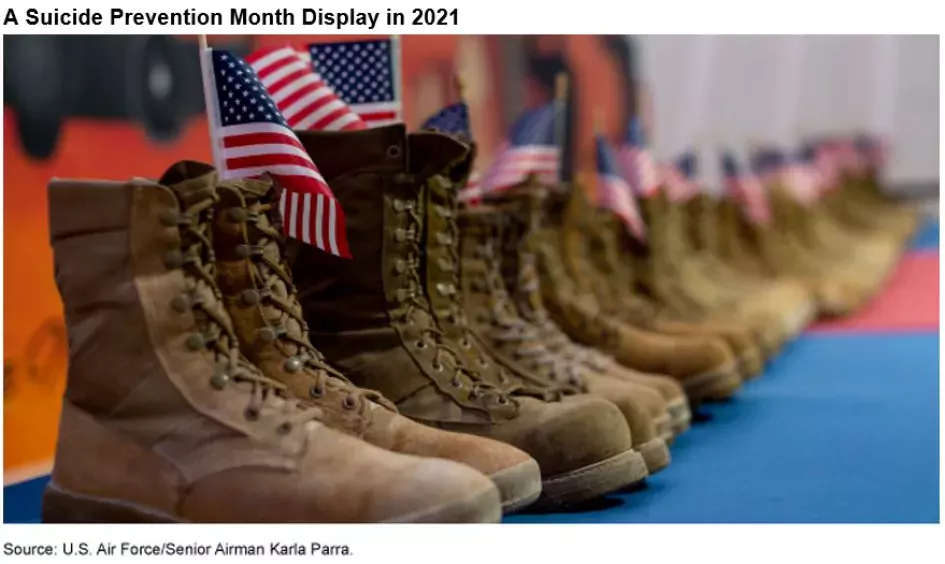Military Servicemembers at Certain Remote Locations Could Face Greater Suicide Risks. What Can DOD Do?
The rate of suicide deaths among military servicemembers has been increasing. In 2020, the Department of Defense (DOD) reported 384 suicide deaths among active component servicemembers. This number represented a 33.5% increase in the suicide death rate since 2016.
Among these deaths were servicemembers who are stationed at remote installations outside of the contiguous United States. Servicemembers at such locations may face unique risk factors for suicide, such as harsh living conditions and limited access to community resources. Today’s WatchBlog post looks at our new report on the DOD’s efforts help these servicemembers.
Image

Suicide risk and challenges at remote locations
The suicide deaths of five servicemembers at the U.S. Army’s Fort Wainwright in Alaska in less than a year (May 2018 to March 2019) raised concerns about risk factors at remote locations.
Military officials told us that servicemembers at remote installations like Fort Wainwright in Alaska can face extreme weather conditions, social isolation, and limited access to behavioral health care. However, we found that DOD has not fully assessed suicide risk at these installations, which would allow DOD to better understand and address unique risk factors and challenges. In our report, we recommended that DOD develop a process for assessing risk factors for suicide and related challenges affecting remote installations outside of the contiguous U.S.—and take appropriate action.
Suicide prevention efforts at military installations and among commanders
DOD and the military services require installations to carry out suicide prevention activities. These include things like designating a suicide prevention program manager and establishing prevention teams and policies, procedures, or plans.
However, we found that the Army, the Navy, and the Marine Corps have not sufficiently ensured that these activities are carried out at installations. This could leave servicemembers at some installations without access to suicide prevention resources that should be in place. We recommended these services establish oversight to ensure that installations complete suicide prevention activities as required.
Suicide response guidance for commanders
Among military commanders, DOD has established guidance for responding to suicide deaths. However, there is no guidance for responding to suicide attempts, although Congress has required DOD to establish such guidance since 2013.
Actions taken by commanders following a suicide attempt can be critical to ensuring the safety of suicide attempt survivors and mitigating suicide risk within the unit. We recommended that DOD establish guidance to address commanders’ response to suicide attempts, which may allow the department to better ensure that commanders across the military services are equipped to support servicemembers returning to duty following a suicide attempt.
Suicide deaths and attempts within the military community are devastating events for servicemembers, their families, and the community. In addition to these tragic losses of life, suicides can also impact the military mission by harming unit morale, esprit de corps (meaning fellowship among servicemembers), and readiness. And they can also increase the risk for suicide among affected servicemembers and family members. By taking action on our recommendations, DOD and the military services can enhance their suicide prevention efforts, including at remote installations outside the contiguous U.S.
- Comments on GAO’s WatchBlog? Contact blog@gao.gov
GAO Contacts
Related Products

GAO's mission is to provide Congress with fact-based, nonpartisan information that can help improve federal government performance and ensure accountability for the benefit of the American people. GAO launched its WatchBlog in January, 2014, as part of its continuing effort to reach its audiences—Congress and the American people—where they are currently looking for information.
The blog format allows GAO to provide a little more context about its work than it can offer on its other social media platforms. Posts will tie GAO work to current events and the news; show how GAO’s work is affecting agencies or legislation; highlight reports, testimonies, and issue areas where GAO does work; and provide information about GAO itself, among other things.
Please send any feedback on GAO's WatchBlog to blog@gao.gov.




